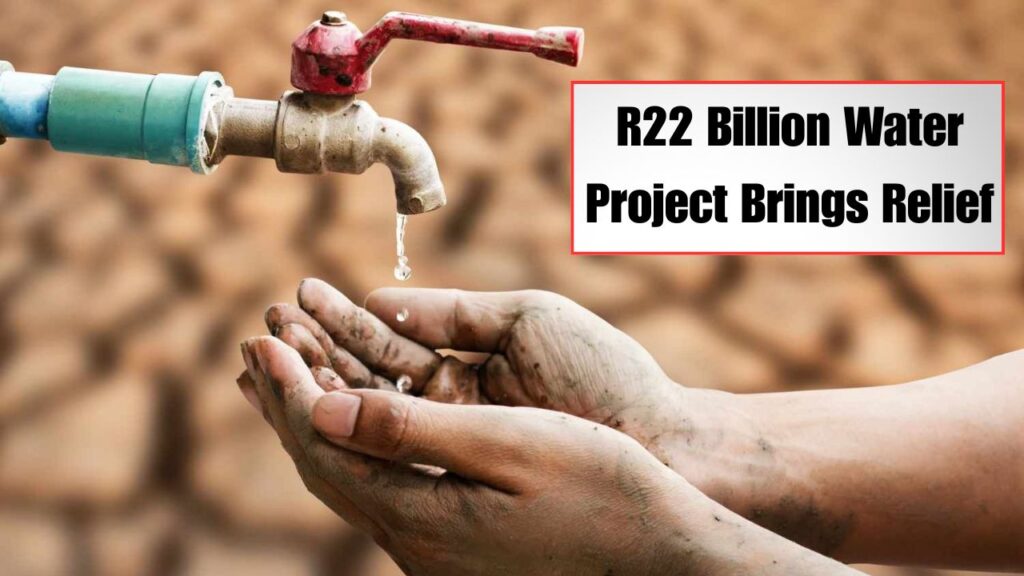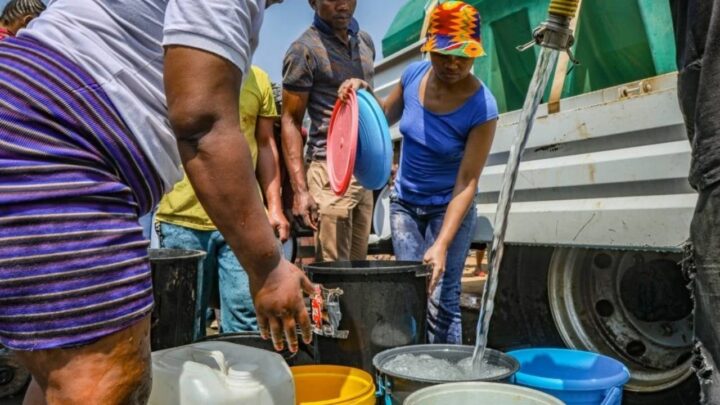After years of water shortages and failed infrastructure promises, relief may finally be in sight for South Africans battling daily water outages. The government has confirmed that a massive R22 billion water project is now underway, aiming to restore reliable water supply across multiple provinces. With dams running low and community protests rising, this ambitious initiative hopes to repair aging infrastructure, boost reservoir levels, and ensure that critical water networks are modernized. Many households that have faced dry taps for months could soon see improvements, as construction phases accelerate before the summer heat intensifies.

South African Government Launches R22 Billion Water Infrastructure Drive
The South African government has earmarked R22 billion for a wide-reaching water restoration program that targets some of the worst-hit municipalities in the country. This project, expected to span several years, includes upgrades to dam pipelines, pumping stations, and treatment plants. The plan prioritizes communities in Gauteng, Eastern Cape, and KwaZulu-Natal, where water outages have sparked serious health and economic concerns. Officials have confirmed that the first wave of funding has already been disbursed, with construction teams mobilized across various districts. The aim is to ensure stable water access and reduce the burden on water tankers currently servicing affected zones.
Water Delivery Project to Benefit Rural and Urban Communities
One of the most notable aspects of the R22 billion investment is its focus on both rural and urban areas. The National Department of Water has highlighted that informal settlements and neglected rural villages will not be left out. From securing boreholes to repairing burst mains in city suburbs, the strategy is holistic in approach. In many metros, local councils have partnered with engineering firms to fast-track work on reservoirs and upgrade low-pressure zones. This is welcome news for residents in areas like Hammanskraal, Soweto, and Gqeberha, where service interruptions have lasted weeks or even months at a time.
| Region | Work Planned | Estimated Completion |
|---|---|---|
| Gauteng (Soweto, Pretoria) | Reservoir expansion, leak repairs | March 2026 |
| Eastern Cape (Gqeberha) | Pipeline upgrades, treatment plants | June 2026 |
| KwaZulu-Natal (Durban North) | Borehole drilling, pumping system | February 2026 |
| Free State (Bloemfontein) | Water purification facility | May 2026 |
| Limpopo (Polokwane) | Dam capacity expansion | August 2026 |
Massive Investment Brings Hope After Long Water Struggles
For many citizens, this project signals the beginning of the end of the prolonged South African water crisis. Years of mismanagement, drought, and broken pipes have left communities vulnerable. With billions now committed, residents are cautiously optimistic that they’ll soon see functioning taps and stable supply. While challenges remain—like corruption risks and delayed tenders—the current administration insists on full transparency. Progress dashboards, local briefings, and ward-level feedback sessions are being implemented to hold contractors accountable. For families who have been buying bottled water or relying on neighbors, this turnaround plan could be a true game-changer.

Which Areas Will See the Most Immediate Relief?
According to officials, the first beneficiaries of this national effort will be densely populated areas with the most frequent water supply disruptions. Places like Tembisa, parts of Durban North, and Mthatha will receive priority based on emergency need and infrastructure decay. Smaller towns such as Butterworth and Thohoyandou are also in line for upgrades. The rollout plan is designed to be staggered, with communities seeing visible progress within 6 to 9 months. Relief efforts are being coordinated with disaster management teams to monitor on-ground impact and adjust strategies where needed.
 October 2025 Alert: Discover SASSA’s Complete Grant Calendar and New Rules for the Next 3 Months
October 2025 Alert: Discover SASSA’s Complete Grant Calendar and New Rules for the Next 3 Months
Frequently Asked Questions (FAQs)
1. What is the total budget of the water relief project?
The project has been allocated R22 billion by the South African government.
2. When will the project be completed?
Major construction phases are expected to be completed between early and mid-2026.
3. Which provinces are prioritized in the plan?
Gauteng, Eastern Cape, and KwaZulu-Natal are top priority due to repeated shortages.
4. Will rural areas also benefit from the upgrades?
Yes, both rural and urban communities are included in the infrastructure overhaul.





